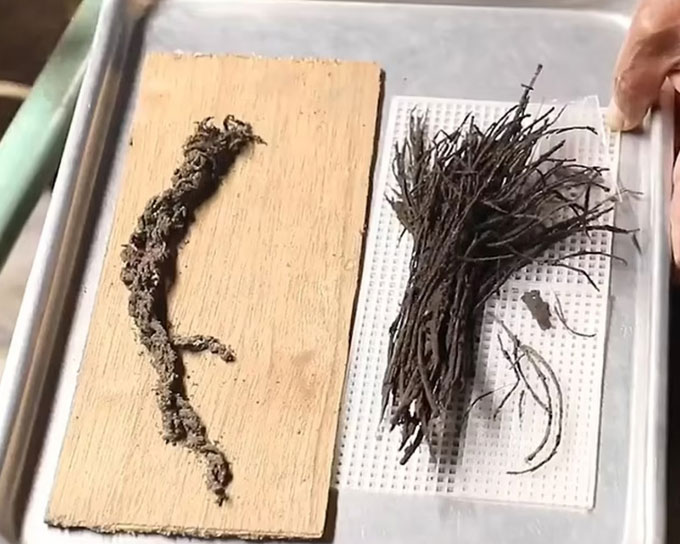The bouquets were found in good condition, still tied with cotton strings, discovered by scientists at a depth of 18 meters beneath the Temple of Quetzalcoatl.
Quetzalcoatl is an important deity from ancient Mesoamerica, a region that includes areas from central Mexico to Belize, Guatemala, El Salvador, Honduras, Nicaragua, and northern Costa Rica.

The ceremonial bouquet found beneath the pyramid in the city of Teotihuacan. (Photo: La Jornada).
The deity Quetzalcoatl is believed to have brought maize and is responsible for creating humanity. The newly discovered bouquets may have been used as offerings to this god. They are still in good condition, even tied together with ropes, likely made from cotton, according to Sergio Gómez, an archaeologist at the National Institute of Anthropology and History of Mexico.
“This is an extremely important discovery as it sheds light on the rituals that took place at this site,” Gómez said to Mail on August 13. He hopes to soon decode the mysteries related to the bouquets and the ancient rituals.
“We are not exactly sure when these bouquets were left, as we just excavated them this week, but they must be very ancient and correspond to the early phase of Teotihuacan, around 1,800 to 2,000 years ago,” Gómez explained.
“We have found complete artifacts in this area, including ceramics from the Zacuali and Miccaotli phases, from the beginning of our era, around the year 0 to 200,” Gómez added. He has been working at Teotihuacan for nearly 12 years, studying rocks and ancient pyramids to find clues about the residents who once lived there.
Experts believe Teotihuacan was built around 100 BC and lasted until the 8th century. They consider it one of the most influential cities in pre-Columbian North America, with a population of 200,000 at its peak. However, only about 5% of the city has been excavated after nearly 100 years of exploration.
During excavations, Gómez discovered over 100,000 artifacts in the ancient city. However, the four ceremonial bouquets are the first intact plant samples ever found there. “They will reveal information about the types of plants used for ritual purposes,” Gómez stated. Additionally, while sifting through the soil, scientists also found several kilograms of charcoal left behind after ancient people burned seeds and fruits as part of their rituals.
- Discovery of two dinosaur species nearly the size of blue whales in China
- Decoding the curse of the “national treasure” iron buffalo cast 1,200 years ago rising from the riverbed
- A forest of 200 million-year-old petrified wood revealed, with just a fragment of a Buddha statue worth over 2 billion VND!





















































